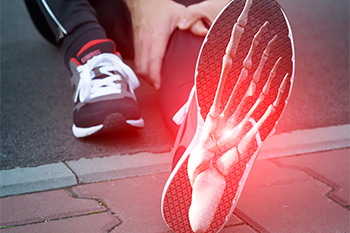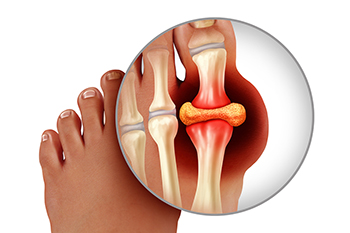Items filtered by date: December 2024
Causes of Foot Stress Fractures

Foot stress fractures occur when repeated stress or impact overwhelms the foot's bones, often from activities like running or jumping. A sudden increase in exercise intensity, duration, or frequency can place excessive strain on the bones, particularly if the body has not adjusted to the added workload. Changes in surface, such as moving from a soft running track to a hard sidewalk, may also trigger stress fractures. Wearing ill-fitting footwear that lacks proper support and cushioning can lead to uneven pressure distribution. Biomechanical issues, including bunions or improper gait, may force certain areas of the feet to bear more weight, which adds to the stress. Athletes, especially those involved in high-impact sports, are particularly vulnerable, but non-athletes engaging in prolonged walking or standing on hard or uneven surfaces can also develop stress fractures. A podiatrist can diagnose the injured foot using digital imaging and develop a treatment plan. If you experience foot pain after running, playing a sport or exercising, it is suggested that you schedule an appointment with a podiatrist to find out whether you may have developed stress fractures.
Stress fractures occur when there is a tiny crack within a bone. To learn more, contact Evan Young, DPM from Trinity Foot & Ankle . Our doctor can provide the care you need to keep you pain free and on your feet.
How Are They Caused?
Stress fractures are the result of repetitive force being placed on the bone. Since the lower leg and feet often carry most of the body’s weight, stress fractures are likely to occur in these areas. If you rush into a new exercise, you are more likely to develop a stress fracture since you are starting too much, too soon. Pain resulting from stress fractures may go unnoticed at first, however it may start to worsen over time.
Risk Factors
- Gender – They are more commonly found in women compared to men.
- Foot Problems – People with unusual arches in their feet are more likely to develop stress fractures.
- Certain Sports – Dancers, gymnasts, tennis players, runners, and basketball players are more likely to develop stress fractures.
- Lack of Nutrients – A lack of vitamin D and calcium may weaken the bones and make you more prone to stress fractures
- Weak Bones – Osteoporosis can weaken the bones therefore resulting in stress fractures
Stress fractures do not always heal properly, so it is important that you seek help from a podiatrist if you suspect you may have one. Ignoring your stress fracture may cause it to worsen, and you may develop chronic pain as well as additional fractures.
If you have any questions please contact our office located in Trinity, FL . We offer the newest diagnostic and treatment technologies for all your foot and ankle needs.
Causes and Symptoms of Gout

Gout is a painful form of arthritis that often affects the feet, particularly the big toe. Gout occurs when uric acid builds up in the body, leading to the formation of sharp crystals in the joints. People with gout frequently experience sudden nighttime attacks of intense pain, swelling, redness, and warmth in the affected area. These gout flare-ups can last from several days to two weeks and may recur periodically. While genetics can increase the risk of gout, factors such as stress, poor diet, alcohol use, and certain health conditions like diabetes and hypertension can also trigger it. Repeated gout attacks in the big toe or ankle may cause chronic pain and deformities, such as tophi, which are hardened uric acid deposits under the skin. A podiatrist can assess the severity of gout through physical examination and diagnostic testing. This foot doctor can also provide targeted treatments to manage pain, reduce inflammation, and prevent further complications. If you have recurrent flare-ups from gout, it is suggested that you make an appointment with a podiatrist for treatment remedies.
Gout is a foot condition that requires certain treatment and care. If you are seeking treatment, contact Evan Young, DPM from Trinity Foot & Ankle . Our doctor will treat your foot and ankle needs.
What Is Gout?
Gout is a type of arthritis caused by a buildup of uric acid in the bloodstream. It often develops in the foot, especially the big toe area, although it can manifest in other parts of the body as well. Gout can make walking and standing very painful and is especially common in diabetics and the obese.
People typically get gout because of a poor diet. Genetic predisposition is also a factor. The children of parents who have had gout frequently have a chance of developing it themselves.
Gout can easily be identified by redness and inflammation of the big toe and the surrounding areas of the foot. Other symptoms include extreme fatigue, joint pain, and running high fevers. Sometimes corticosteroid drugs can be prescribed to treat gout, but the best way to combat this disease is to get more exercise and eat a better diet.
If you have any questions, please feel free to contact our office located in Trinity, FL . We offer the newest diagnostic and treatment technologies for all your foot care needs.
